Class 109 Wickham 2-car DMUs
Liveries
The sets were delivered in DMU ("malachite") green without speed whiskers. This was lined with two wide bands of approx 1 1/2" or 1 3/4" which did not have a black edge. Buffers were polished (or painted white) white stood out against the vermilion deep buffer beam. Other features were picked out in white - the lamp faces and metal pipework on the buffer. The cab and the inner part of the side window frames were left as polished alloy, with alloy wipers, the gutter black and the roof a mid-grey. The tyres on the wheels were also white. For further details of liveries when new see below.
The speed whiskers were applied from early '59, which generally seems to have been at the time of a complete repaint as the top band was replaced by a narrower one. Another change, slightly more consistent, was that the polished cab window frames were painted out.
In the early '60s small yellow panels were applied.
As the General Managers saloon 50416/56171 emerged in the early blue livery variation that carried small yellow ends (see the Ian Allan Fleet Survey book) before having a full yellow end. Of the two sets remaining in passenger use, at least 50417/56172 received blue livery (see the 1968 and 1972 ABCs).
The pre-whisker days
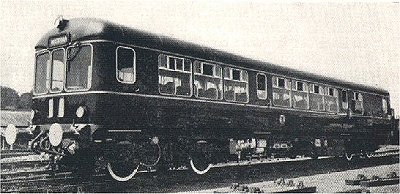
The first vehicle
As with most DMUs, the sets were well described and illustrated in the railway journals of the time. During the restoration of the preserved set, the owners were lucky enough to unearth some shots taken as the first vehicle, 50415 left the works (first image). They are undated but show that several changes (inside and out) were made between when they were taken and before they entered traffic.

The same vehicle visited the Battersea exhibition (28-30th June 1957) (as seen in the second image). Two differences noted were that in the works pictures the the top lining extended onto the black gutter, by Battersea it stopped when meeting the gutter. Blue squares were now added.
Finally, there is variations in the painting of the underframe items, with more items picked out in silver in the first picture but painted black by Battersea.
A difference with this car was where the vac. pipes come through the buffer beam they are black, whereas white was the norm, yet the coupling parts are white.
It entered traffic in August.
Since notable differences occurred in such a short time, it is not surprising that over the unnaturally long period it took Wickhams to produce just five sets that there were further variations. It turns out that all sets had minor differences when new, but this can allow previously unknown vehicles to be identified in photos, aided by the fact that the sets remained in their originals formations till the end.
Blue Squares
All vehicles were delivered with these, and they were either to the inside or outside of the marker lights.
Numbers
Wickham seemed to have its own ideas about where to apply numbers! Normally on DMUs numbering was applied centered below a window or between windows. Wickham liked to have these run from the centre to the just before the right corner of a window (first picture).
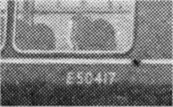
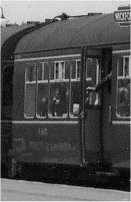
But even more bizarrely, on the first two trailers the numbers were applied to the left side rather than the right. So on one side of the units both numbers were on the outer ends, on the other side they were both on the inner ends! (second picture).
Electrical Box
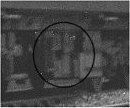
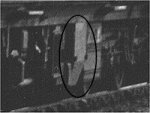
A lot of the electrical equipment on the underframe is grouped together under the power car just on front of the battery box on the drivers side. On the first car these were all in individual boxes (left), on the other four (right) one large lid covered them all. A similar arrangement was on the trailer cars.
Putting it all together
The above information shows us that:
| Vehicles | Blue Squares | Trailer numbers | Electrical Boxes |
|---|---|---|---|
| 50415 / 56170 | outside | left hand | separate |
| 50416 / 56171 | inside | left hand | one |
| 50417 / 56172 | inside | right hand | one |
| 50418 / 56173 | outside | right hand | one |
| 50419 / 56174 |
50419/56174
The entries have been left blank as I have not been able to find any photos of these without whiskers. But pictures of these cars with whiskers shows another variance, in that the have the thick lining top and bottom, rather that a thin one on top as was norm for the whisker period. The set wasn't delivered till August 1958, and the earliest identifiable picture I have of them is March 1959, so they were either delivered with whiskers or they were added very soon afterwards.
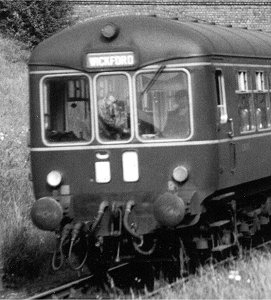
And so...
Can we use this info to identify unknown vehicles from the pre-whisker era? In this picture it's a trailer car (first class seats seen through the window), the blue squares are in the inside, the number is on the left side of the vehicle. Using the table above it must be 56171! Taken on the 18th June 1958.
Some information can be applied to other periods. In the Brian Morrison book "British Rail DMUs & Diesel Railcars" the picture of a power car under construction at the bottom of page 102 is 50415 as it has the separate electrical boxes. The leading Trinidad vehicle at the top of page 104 is 56174 as it has the combined electrical box.
White embelishments
At least the first four sets (and probably all five) left the works tarted up with white tyres, lamp faces, buffers, vac. pipes etc. See the Battersea image of 50415 above, below is a picture of 50416 / 56171 (the now preserved set) when brand new, for 50417 / 56172 see the book 'British Rail DMUs & Diesel Railcars' by Brian Morrison, top of page 103. For 50418 / 56173 see the winter 58/59 ABC. White is not the best colour for railway vehicles, particularly on the underframe area, and these soon just got dirty and blended in to the surroundings. The white lamp facings stood out the most, as the lenses would be cleaned. Interestingly the white vac. pipes and couplings was retained in almost all cases right through to blue livery. How did the staff survive without them being blue and red? Its physically impossible to get them the wrong way around!
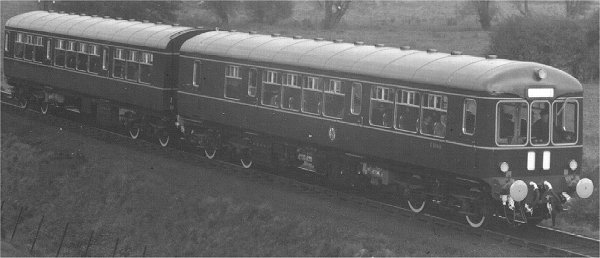

Green with yellow panels
In time the whiskers would be replaced with yellow warning panels on the three remaining set, circa 1963/4. In this condition is set E56173 and E50418 in Manningtree station on 30th July 1964. Tim Stubbs.

Rail Blue with yellow panels
It seems the only vehicles of the type to receive this early variation of corporate blue were 50416 + 56171. E50416 was noted ex-works at Doncaster in these colours on 17 April 1966.[1]
They would be noted in these colours operating Cambridge - Bletchley services the following month. Circa the end of 1966 they were converted to the General Manager's Saloon 975005 + 975006. The image shows them at Doncaster soon after conversion. David Faircloth.

Rail blue with full yellow end
The three remaining sets (the ER GM saloon and the two passenger sets) would receive full yellow end with rail blue livery. In these colours are DMBS 50417 in the back yard at Norwich depot on 20th June 1971. Note the rubber panel just behind the drivers door. Tim Stubbs.
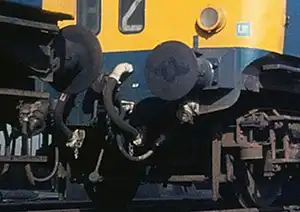
At least one vehicle, a DMBS — thought to be E50418, was given a blue buffer beam when painted into Rail Blue livery.
References
- ⋏ p196 June 1966 Railway Observer (Railway Correspondence and Travel Society)
Summary
Description
Interiors
Diagrams & Driving Instructions
Numbering
Liveries
Operations
Allocations
Non-Passenger Use
Images
The preserved Wickham unit (external site).
Thanks to Andrew Middleton and Keith Gunner for additional information.


